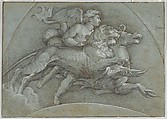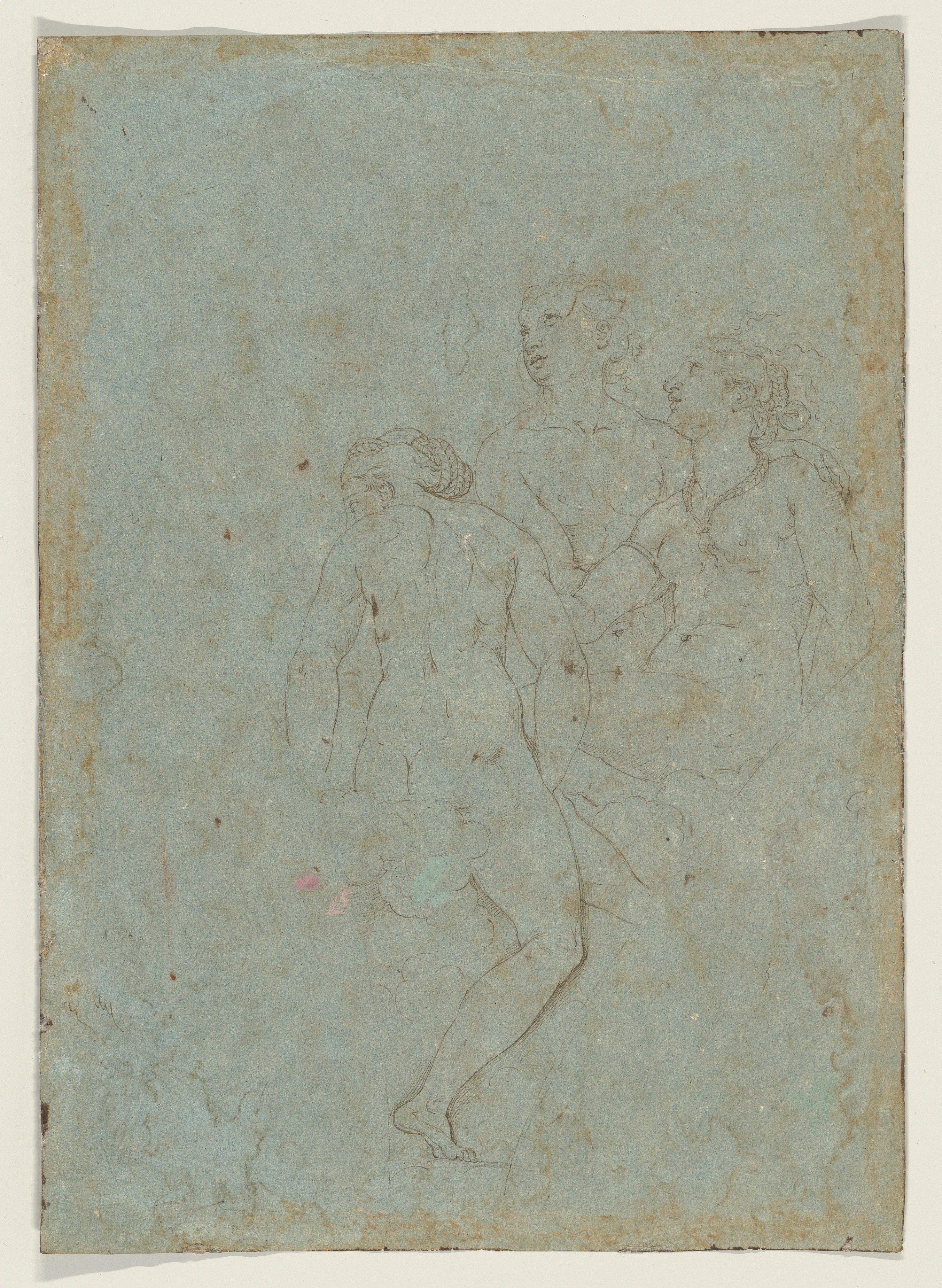A Winged Putto Riding a Sea Horse and a Lion; verso: The Three Graces
Denijs Calvaert Netherlandish
After Raphael (Raffaello Sanzio or Santi) Italian
Not on view
One of around twenty Italian drawings from the Massar collection, this double-sided sheet has recently been recognized as the work of Denijs Calvaert. Now almost illegible, the sheet is dated and signed at the bottom by the artist, “1574 / Dionisio Calvaert,” together with his place of birth, “DE ANVERSA” (Antwerp). Calvaert was in Rome between 1573 and 1576 where he made numerous studies after ancient sculpture and painting, but few have survived. This drawing is a copy after Raphael’s celebrated fresco at the Villa Chigi (commonly known as the Villa Farnesina), painted in 1517–18. Calvaert’s copies, such as this one, became highly sought after in Rome and were often mistaken as Raphael's own work. The bold and carefully finished manner we see in this sheet is typical of his drawing style.
Due to rights restrictions, this image cannot be enlarged, viewed at full screen, or downloaded.
This artwork is meant to be viewed from right to left. Scroll left to view more.







